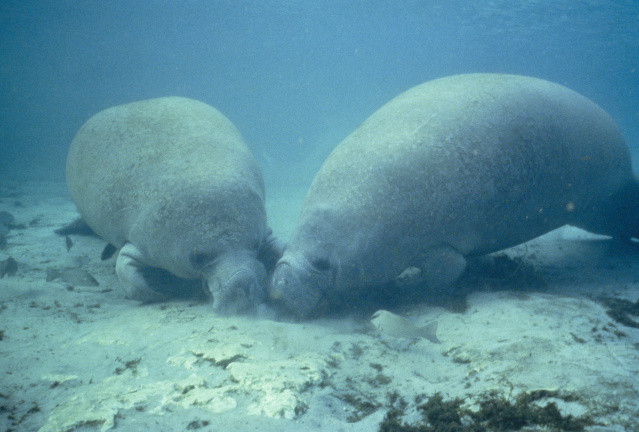References
Douglas, M.B. 1986. The digestive strategy and efficiency of the
west indian manatee, Trichechus manatus. Comparative
Biochemistry and Physiology 85:139-142.
Flewelling L.J., J.P. Naar, J.P Abbott, D.G. Baden and N.B.
Barros. 2005. Brevetoxicosis: red tides and marine mammal
mortalities. Nature 435:755-756
Garcia-Rodriguez, A.I., B.W. Bowen, D.Domning and A.A. Mingucci-Giannoni. 1998. Phylogeography of the West Indian
manatee (Trichechus
manatus): how many populations and how many taxa? Molecular
Ecology 7:1137-1149.
Lin Y., M. Risk, S.M. Ray, D.V. Engen, J. Clardy, J. Golilk,
J.C. James and K. Nakanishi. 1981. Isolation and structure of
brevetoxin from the "red tide" dinoflagellates. Journal of the
American Chemical Society 103:6773-6775.
Mignucci-Giannoni, A.A. and C.A. Beck. 2006 The diet of manatee
(Trichechus manatus) in Puerto Rico. Marine Mammal
Science 14:394-397
Nowacek, S.M., R.S. Wells, E.C. Owen, and T.R Speakman. 2004.
Florida manatees,
Trichechus manatus, respond to approaching vessels.
Biological Conservation 119:517-523.
Olivera-Gomez, D. 2000.Distribution and habitat use by manatee(Trichechus
manatus) in Belize and Chetumal Bay, Mexico. Biological
Conservation 95:67-75.
Sorice M.G., C.S. Shafer, and D. Scott. 2003. Managing
endangered species with the use/preservation paradox:
understanding and defining harassment of the west indian manatee
(Trichechus manatus). Costal Management 31:319-338.
Back to the home page
